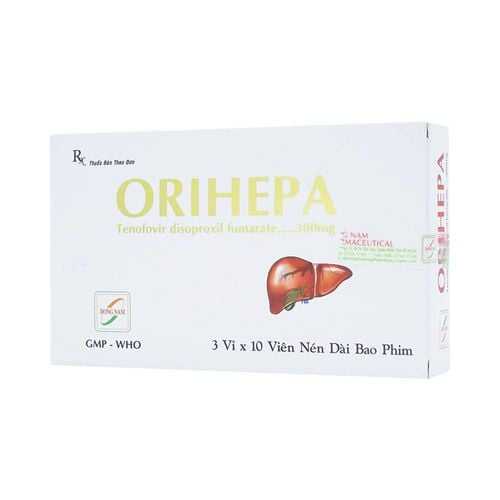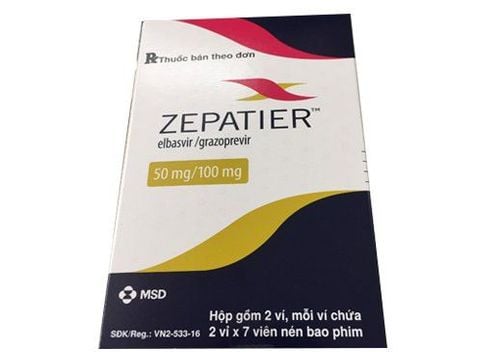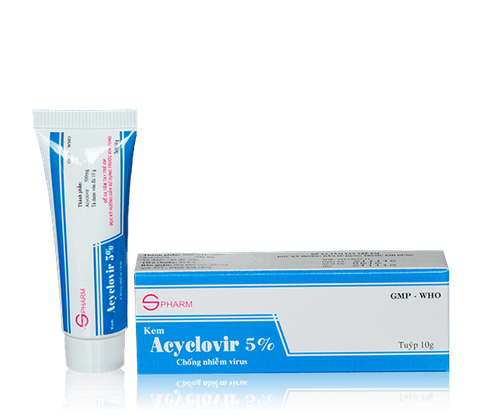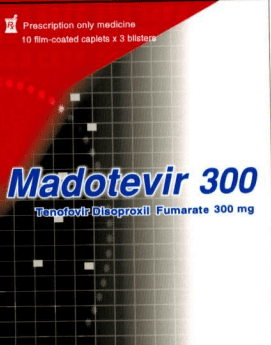This is an automatically translated article.
Hepatitis C is one of the most common causes of chronic hepatitis in humans. The disease often shows no symptoms until it becomes chronic hepatitis C. Hepatitis C drugs are direct antiviral drugs that permanently remove viral RNA.
1. Hepatitis C is a very common cause of chronic hepatitis
Viral hepatitis is an inflammation of the liver caused by a virus, there are currently 5 types of hepatitis viruses that are hepatitis A, B, C, D, E, in which hepatitis A, hepatitis B, and C is the most popular. Hepatitis B and hepatitis C can progress to cirrhosis and liver cancer. Hepatitis B and hepatitis C can begin with an acute infection, but in many patients, the virus can remain in the body for a long time and turn into chronic hepatitis.
Hepatitis conditions lasting > 6 months would be diagnosed as chronic hepatitis (however, this timeline is not strictly required). In clinical practice, there are 6 main genotypes of hepatitis C virus, each of which will respond differently to treatment. In particular, genotype 1 is more common than genotypes 2, 3, 4, 5, and 6. Genotype 1y accounts for 70-80% of chronic hepatitis C cases in the US.
75% of patients with acute hepatitis C will progress to chronic hepatitis C. According to the US CDC, an estimated 2.7-3.9 million people have chronic hepatitis C. Currently, around 71 million people worldwide have chronic hepatitis C.
20 - 30% of patients with chronic hepatitis C will progress to cirrhosis, the time for cirrhosis complications to appear can take decades. Next, hepatocellular carcinoma is a consequence of cirrhosis due to chronic hepatitis C, however, hepatocellular carcinoma is very rare in patients with chronic hepatitis C infection without progression. cirrhosis (unlike chronic hepatitis B infection).
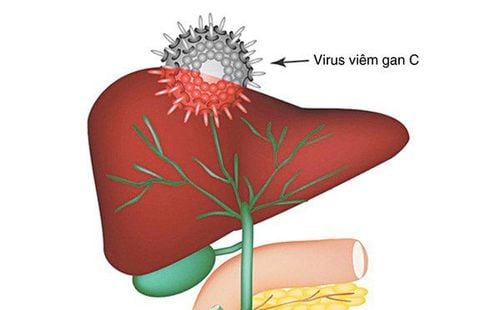
Bệnh viêm gan c mạn tính có thể tiến triển thành xơ gan
2. What is a DAA direct antiviral?
DAA direct antiviral drug is a hepatitis C drug that acts directly on the specific non-structural proteins of the virus, through which the antiviral drug interrupts the replication and interferes with the infection process of the virus. virus. New DAA direct antiviral drugs are available in Viet Nam such as sofosbuvir, daclatasvir, sofosbuvir/ledipasvir, sofosbuvir/velpatasvir, grazoprevir/elbasvir. These hepatitis C drugs are used to treat patients for 12 weeks or up to 24 weeks if the patient has cirrhosis. Direct antiviral drugs are used orally, the drug has few side effects and gives high treatment efficiency, up to 95-98%.
Direct antiviral DAAs used in the treatment of chronic hepatitis C include:
Telaprevir, Boceprevir: these are 1st generation protease inhibitors, drugs that are active against hepatitis C virus of genotype 1 ; Simeprevir: a 2nd generation protease inhibitor, this is a genotype 1 specific treatment for hepatitis C; Sofosbuvir: polymerase inhibitor, drug active against hepatitis C virus genotype 1 - 6; Paritaprevir: this is a protease inhibitor; Ledipasvir: protease inhibitor; Dasabuvir: polymerase inhibitor; Ombitasvir: active ingredient that inhibits the non-structural protein 5A of hepatitis C virus (NS5A inhibitor); Daclatasvir: active NS5A inhibitor; Elbasvir: NS5A inhibitor; Grazoprevir: protease inhibitor; Velpatasvir: NS5A inhibitor used to treat all genotypes of hepatitis C virus; Glecaprevir: protease inhibitor used to treat all genotypes of hepatitis C virus; Pibrentasvir: NS5A inhibitor used to treat all genotypes of the hepatitis C virus. Direct antiretroviral agents (DAAs) are a group of prescription drugs, used only by prescription, acting as a role-playing drug. important role in the treatment of people with chronic hepatitis C virus infection. If left untreated, hepatitis C virus infection can lead to serious liver damage such as cirrhosis, liver cancer and even death. Common adverse effects of DAA direct-acting antivirals are drug-specific, but common are fatigue, headache, and nausea. Current DAA direct antiretroviral drugs are usually made as a single agent or as a combination drug.

Người mắc bệnh viêm gan c mạn tính nên sử dụng thuốc theo hướng dẫn của bác sĩ
3. What is the best treatment regimen for chronic hepatitis C?
Up to the present time, the treatment regimens for chronic hepatitis C with direct antiviral drugs DAAs are the best. Treatment of chronic hepatitis C with direct antiretroviral drugs (DAAs) has a success rate of 93-99%. For example:
Genotype 2 is treated with Sofosbuvir + Ribavirin or Sofosbuvir + Daclatasvir, the treatment period lasts 12 weeks; Genotype 1 and genotype 6 are treated with Sofosbuvir + Ledipasvir, with a duration of 12 weeks. In general, the new direct antiviral drugs DAAs are quite safe and have few side effects and can shorten the duration of chronic hepatitis C treatment to 12 weeks. Patients who are being treated for chronic hepatitis C can continue their outpatient treatment at home (no need to be hospitalized), patients can still work, travel, study, even go to school. normal travel.
During the treatment of chronic hepatitis C with antiviral drugs without abstaining from food, the patient can still use other normal treatment drugs such as diabetes drugs, high blood pressure drugs, etc. antibiotics, pain relievers... New direct antiviral drugs DAAs are easy to adhere to, patients only need to take 1-3 pills per day.
Direct antiretroviral drugs help expand the scope of treatment to patients with cirrhosis, decompensated cirrhosis, patients who have failed to apply interferon therapy or patients with contraindications to the treatment. Interferon injection.
4. What tests should be done after stopping direct antiretroviral drugs?
Direct antiretroviral drugs (DAAs) are usually used for 3 months and then stop treatment, patients do not need to take any more drugs. Patients should repeat HCV RNA test 6 months, 12 months, 18 months after starting treatment for chronic hepatitis C. If the HCV RNA test result is "undetectable", then the patient is determined to be completely cured, if the Anti-HCV test is positive, this is the body's own antibody.
5. Patients with chronic hepatitis C co-infected with HIV
Patients with chronic hepatitis C co-infected with HIV are still on DAAs. For example:
Genotype 2 is treated with Sofosbuvir + Ribavirin or Sofosbuvir + Daclatasvir, the treatment period lasts 12 weeks; Genotype 1 and genotype 6 are treated with Sofosbuvir + Ledipasvir, with a duration of 12 weeks. During treatment for chronic hepatitis C, the patient still takes normal antiretroviral drugs.
6. Patients with chronic hepatitis C co-infection with hepatitis B
Patients with chronic hepatitis C and hepatitis B infection will be treated with DAAs.
Before and after treatment for chronic hepatitis C should be tested for HBV DNA. If after treatment for chronic hepatitis C, the hepatitis B virus count is still high, then treatment with antiviral drugs Entecavir or Tenofovir, the duration of hepatitis B treatment should last at least 2 years, after stopping the drug. The disease must still be under the supervision of a doctor.
Follow Vinmec International General Hospital website to get more health, nutrition and beauty information to protect the health of yourself and your loved ones in your family.
Please dial HOTLINE for more information or register for an appointment HERE. Download MyVinmec app to make appointments faster and to manage your bookings easily.




